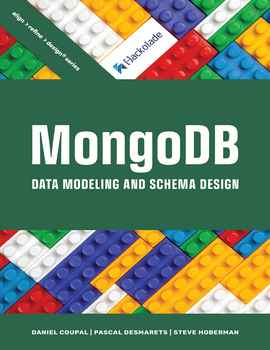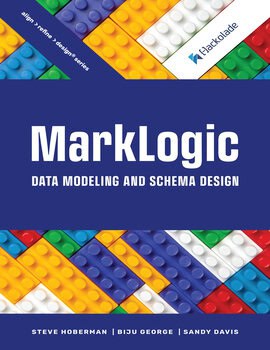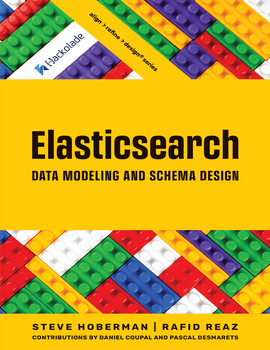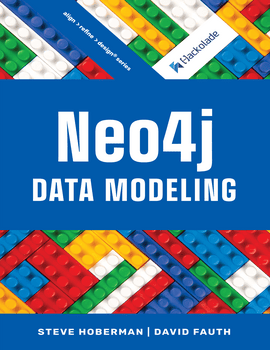MongoDB Data Modeling and Schema Design
The Align > Refine > Design Series, by Steve Hoberman and industry experts
The Align > Refine > Design series covers conceptual, logical, and physical data modeling (schema design and patterns) for leading technologies, combining proven data modeling practices with database-specific features to produce better applications.
Topics
Introduction: About Data Models
Data model explanation
Three model characteristics
Precise
Minimal
Visuals
Three model components
Entities
Relationships
Attributes and keys
Three model levels
Business terms (Align)
Logical (Refine)
Domain-Driven Design
Physical (Design)
Three model perspectives
Relational
Dimensional
Query
Chapter 1: Align
Purpose
Our animal shelter
Approach
Step 1: Ask the six strategic questions
Step 2: Identify and define the terms
Step 3: Capture the relationships
Step 4: Determine the visual
Step 5: Review and confirm
Three tips
Three takeaways
Chapter 2: Refine
Purpose
Approach
Step 1: Apply elicitation techniques
Analyze workloads
Quantify relationships
Step 2: Refine queries
Step 3: Capture attributes and relationships
Three tips
Three takeaways
Chapter 3: Design
Purpose
Approach
Step 1: Select database(s)
Step 2: Add secret sauce
Embedding vs Referencing
Schema design patterns
The Approximation Pattern
The Archive Pattern
The Attribute Pattern
The Bucket Pattern
The Computed Pattern
The Document Versioning Pattern
The Envelope Pattern
The Extended Reference Pattern
The Graph Pattern
The Inheritance Pattern
The Outlier Pattern
The Preallocated Pattern
The Schema Versioning Pattern
The Single Collection Pattern
The Subset Pattern
The Tree Pattern
Primary Keys
Schema validation
Monitoring schema evolution
Schema migration
Step 3: Optimize
Indexing
Sharding
In-Use Encryption
Generation of test data
Three tips
Three takeaways
Read MongoDB Data Modeling and Schema Design if you are a data professional who needs to expand your modeling skills to include MongoDB or a technologist who knows MongoDB but needs to grow your schema design skills.
The book’s introduction and three chapters cover the Align, Refine, and Design approach. We include what the level does in the name by rebranding Conceptual, Logical, and Physical into Align, Refine, and Design.
The introduction covers the three modeling characteristics of precise, minimal, and visual; the three model components of entities, relationships, and attributes (including keys); the three model levels of conceptual (align), logical (refine), and physical (design); and the three modeling perspectives of relational, dimensional, and query. Chapter 1, Align, is about agreeing on the common business vocabulary so everyone is aligned on terminology and general initiative scope. Chapter 2, Refine, is about capturing the business requirements. That is, refining our knowledge of the initiative to focus on what is essential. Chapter 3, Design, is about the technical requirements. That is, designing to accommodate our model’s unique software and hardware needs.
Align, Refine, and Design—that’s the approach followed in this book and reinforced through an animal shelter case study.
If you are interested in learning how to build multiple database solutions, read all the books in the Align > Refine > Design series. Since each book uses the same template, you can quickly skill up on additional database technologies.
About Daniel
About Pascal
About Steve
Steve Hoberman is a world-recognized innovator and thought-leader in the field of data modeling. He has worked as a business intelligence and data management practitioner and trainer since 1990. He is the author of Data Modelers Workbench and Data Modeling Made Simple, the founder of the Design Challenges group and the inventor of the Data Model Scorecard®.
Faculty may request complimentary digital desk copies
Please complete all fields.




